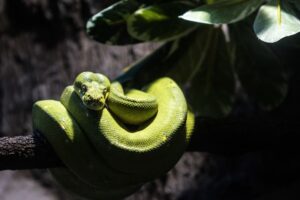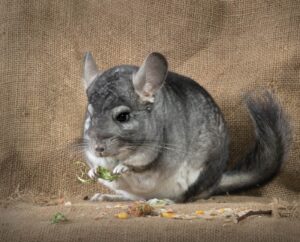Table of Contents
ToggleIntroduction
Turtles have a vast range of nutritional preferences due to their diverse species and habitats. While most turtles’ primary diet consists of aquatic foliage, insects, and tiny aquatic animals. Do Turtles Eat Oranges? There are times when these seemingly unassuming creatures exhibit a taste for more unusual foods. Understanding turtle dietary demands is critical to their general health. Different species have different needs, which affect environment, size, and age. Some turtles are omnivores, eating plant and animal matter, while others have a more herbivorous or carnivorous diet.
Background On Turtle Diets
Turtles, an ancient and diverse group of reptiles, inhabit many ecosystems, ranging from freshwater lakes and rivers to terrestrial environments. Understanding their dietary habits is essential to providing optimal care and unlocking the mysteries of their culinary preferences.
Overview of Diverse Turtle Species: The world of turtles is marked by incredible diversity, with over 350 recognized species. Each species has evolved to thrive in specific habitats, influencing their dietary adaptations. From the sleek, aquatic sea turtles to the more terrestrial box turtles. The range of environments these creatures inhabit shapes their nutritional choices.
Differentiated Dietary Preferences: Turtles exhibit a spectrum of dietary preferences. Emphasizing the need for a nuanced understanding of their feeding habits. While some species are strictly herbivorous, relying on a diet primarily composed of vegetation such as algae, aquatic plants, and grasses, others lean towards omnivory, incorporating both plant and animal matter into their meals. This differentiation is a response to the ecological niches they occupy and the availability of food resources within those habitats.
Herbivorous, Omnivorous, and Carnivorous Distinctions: The classification of turtles into herbivores, omnivores, and carnivores reflects the diversity of their dietary strategies. Herbivorous turtles, like the green sea turtle, are adapted to feed on seagrasses and algae. Omnivorous species, such as the red-eared slider, showcase a broader palate, consuming a mix of vegetation, insects, and small aquatic animals. On the carnivorous end of the spectrum, turtles, like the snapping turtle, prefer a diet primarily composed of fish, amphibians, and even small mammals.
Exploration Of Turtle Species
Turtles, with their fascinating array of species, each bring a unique culinary perspective to the table. Examining the dietary habits of specific turtle species sheds light on the diverse ways in which these reptiles navigate their ecosystems and make culinary choices.
Painted Turtle’s Preference for Aquatic Vegetation: The painted turtle, an iconic North American species, showcases a pronounced preference for aquatic vegetation. These turtles, often found in ponds and slow-moving streams, have adapted to a herbivorous diet. Their menu includes a variety of aquatic plants, algae, and submerged vegetation. This herbivorous inclination reflects the painted turtle’s ability to thrive in freshwater environments where plant resources are abundant. Understanding the dietary preferences of the painted turtle provides a lens through which we can appreciate the intricate balance maintained in its natural habitat.
Red-Eared Slider’s Omnivorous Tendencies: In contrast, the red-eared slider, another widely distributed turtle species, exhibits more omnivorous tendencies. Recognized for being flexible, the red-eared slider encompasses plant and animal matter in its diet. While aquatic vegetation remains a significant part of its food repertoire, these turtles consume insects, small fish, and crustaceans. This omnivorous approach allows red-eared sliders to capitalize on a broader range of available food sources, making them adaptable residents in diverse aquatic ecosystems.
Relevance to Understanding Orange Consumption: Exploring the dietary preferences of these distinct turtle species becomes particularly relevant when contemplating their potential consumption of oranges. While the painted turtle’s herbivorous tendencies may not naturally lead it to oranges, the omnivorous nature of the red-eared slider opens the door to the possibility of these turtles developing a taste for the citrusy fruit. The varying dietary adaptations among turtle species highlight the need for a tailored approach when considering unconventional food offerings, emphasizing the importance of understanding each species’ unique needs and preferences.
Nutritional Considerations
As we venture into the potential inclusion of oranges in a turtle’s diet, scrutinizing this citrus fruit’s nutritional aspects is imperative. While oranges offer certain benefits, their composition requires careful consideration to ensure the well-being of these remarkable reptiles.
Overview of Oranges’ Composition: Oranges, renowned for their refreshing taste, are packed with essential nutrients. They are a rich source of vitamin C, a powerful antioxidant vital for immune function, wound healing, and overall health. Oranges also contain dietary fiber, supporting digestive health, minerals, and other vitamins. The combination of these elements makes oranges a nutritionally dense fruit for humans and animals with specific dietary requirements.
Vitamin C Benefits: One of the standout features of oranges is their high vitamin C content. While turtles, like many animals, turtles can synthesize vitamin C internally, its inclusion in their diet can still offer supplementary benefits. Vitamin C plays a crucial role in collagen synthesis, bone formation, and maintaining the integrity of connective tissues. Additionally, its antioxidant properties contribute to the overall health and vitality of the turtle.
Caution: High Sugar Content and Potential Health Risks: Despite the nutritional benefits, the high sugar content in oranges warrants caution when considering them as a regular part of a turtle’s diet. Turtles, with their distinct metabolic processes, may not efficiently process high levels of sugar. Excessive sugar intake can lead to weight gain, metabolic imbalances, and potential complications, emphasizing the need for moderation.
Responsible Caretaking
Caring for turtles encompasses providing a suitable environment and managing their dietary needs with diligence. Responsible caretaking involves:
- A thoughtful approach to introducing new foods.
- Ensuring appropriate portion sizes.
- Maintaining a nutritional balance that aligns with the specific requirements of these unique reptiles.
Gradual Introduction of New Foods: Turtles, known for their sensitivity to dietary changes, benefit from a gradual introduction to new foods. This principle applies to introducing oranges or other unconventional items into their diet. Sudden shifts in diet can lead to digestive distress or refusal to consume the new food. Caretakers should introduce oranges incrementally, allowing turtles to acclimate to the novel taste and texture. This gradual approach minimizes stress and facilitates a more positive response from the turtles.
Portion Control and Observation: Portion control is a crucial aspect of responsible caretaking, especially when offering treats like oranges. While the nutritional benefits are acknowledged, excessive consumption can lead to imbalances and potential health issues. Caretakers should carefully monitor the amount of oranges provided, ensuring they remain within a reasonable and well-tolerated range for the specific turtle species. Regular observation is paramount during this process, as it allows caretakers to assess the turtle’s response, ensuring that the introduction of oranges does not compromise their overall well-being.
Maintaining Nutritional Balance: Responsible caretaking extends beyond the immediate introduction of new foods to maintaining a nutritional balance in a turtle’s diet. While treats like oranges may offer certain benefits, one way to look at them is supplementary rather than primary sources of nutrition. A well-rounded diet that considers the specific turtle species’ natural dietary tendencies. Along with each food item’s nutritional content, is essential. Caretakers are pivotal in curating a menu, ensuring turtles receive the necessary vitamins, minerals, and nutrients for optimal health.
Conclusion
When we look at the diets of turtle species, we can see how diverse they are. While some turtles are pure herbivores, relying solely on water plants for nutrition, others are omnivorous. Consuming plant and animal materials. The red-eared slider, for example, is a perfect example of a turtle with a more diversified palette that allows for adding fruits like oranges.
Oranges, with their luscious sweetness and vitamin-rich content, are a one-of-a-kind addition to the turtle’s diet. Whether turtles eat oranges has elicited a complex response – a cautious yes, but with qualifications. The citrus treats should be taken cautiously, considering these captivating creatures’ inherent nutritional preferences and digestive sensitivity.







